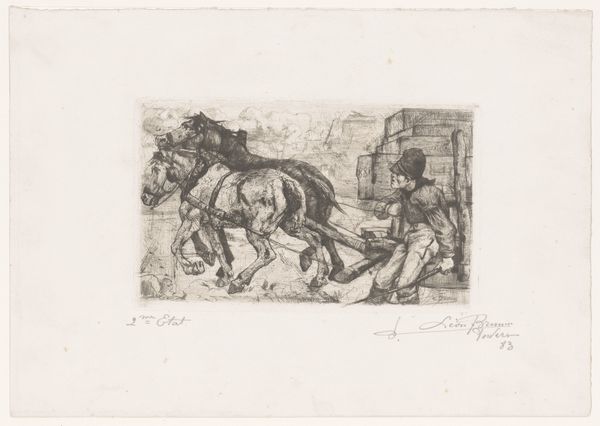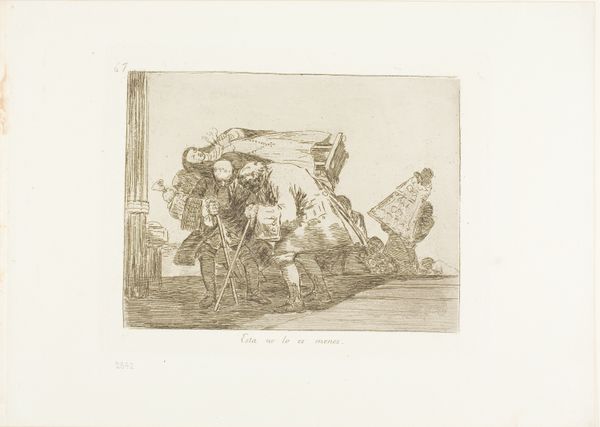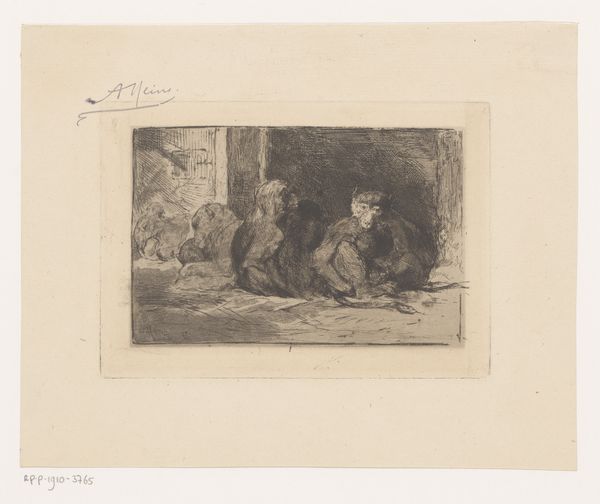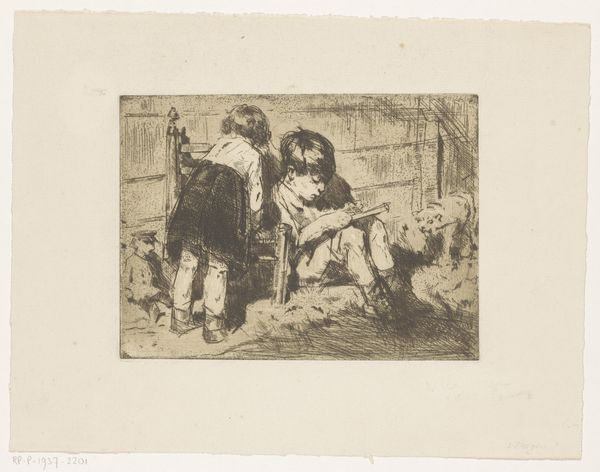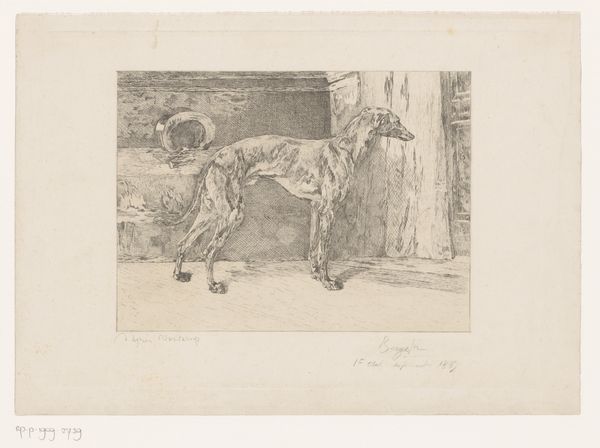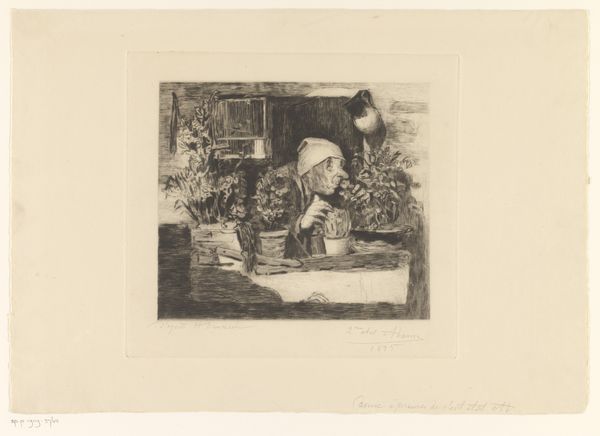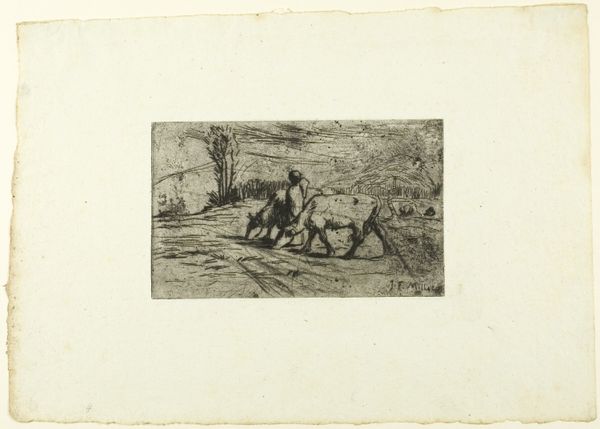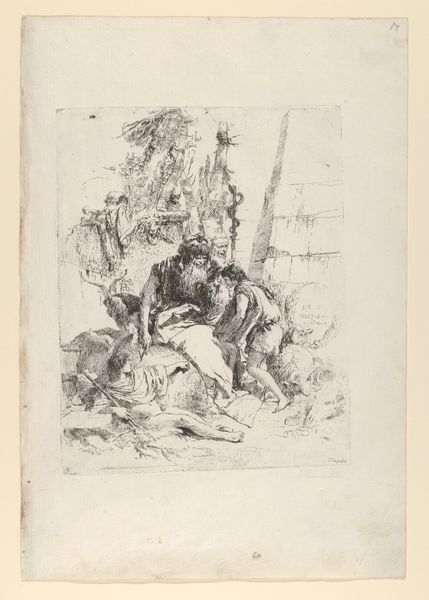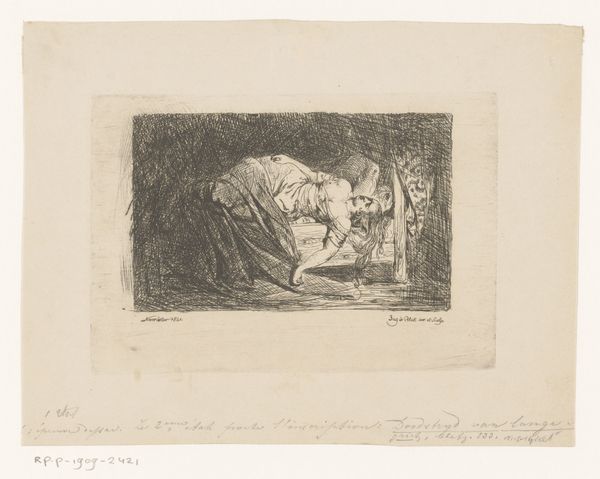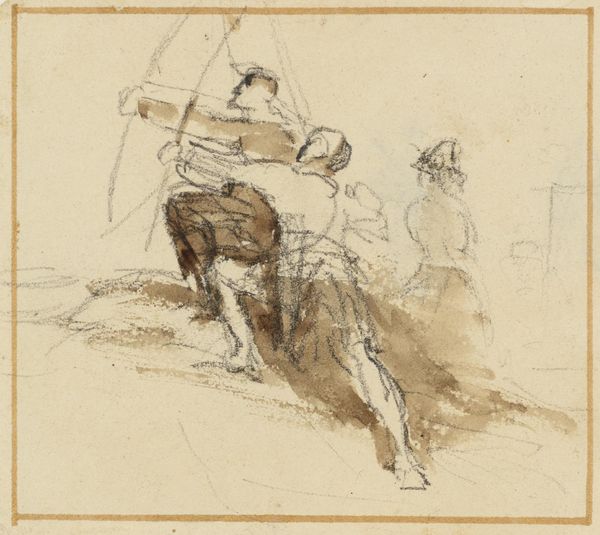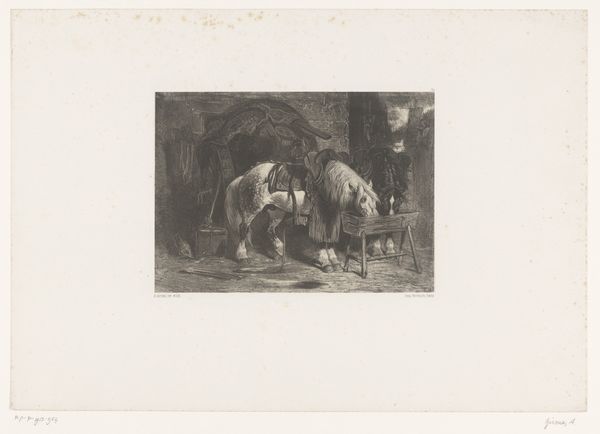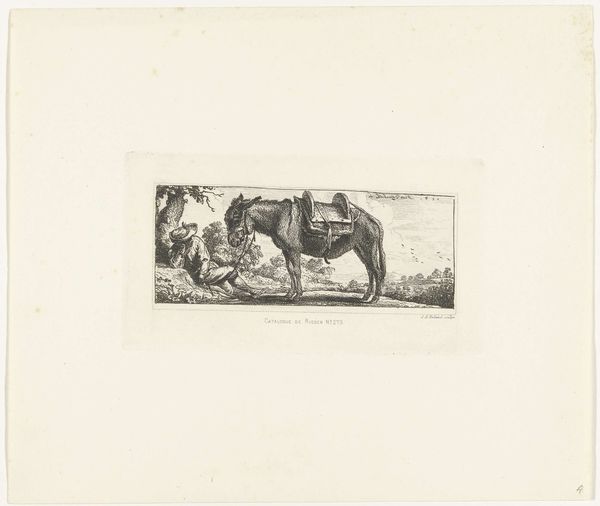
#
toned paper
#
light pencil work
#
ink paper printed
#
pencil sketch
#
old engraving style
#
personal sketchbook
#
ink drawing experimentation
#
pen-ink sketch
#
sketchbook drawing
#
sketchbook art
Dimensions: width 100 mm, height 164 mm
Copyright: Rijks Museum: Open Domain
Curator: L\u00e9on Brunin created this work in 1883; it's called "Wagenmenner leidt een tweespan dat een zwaar beladen kar trekt," or "Wagoner leading a team of two pulling a heavily laden cart". It appears to be an ink drawing, possibly a sketch, on toned paper. Editor: There's a real sense of movement, but also struggle, in this piece. The way the horses are rendered, mid-stride, conveys an incredible sense of labor. You can almost feel the weight they are pulling! Curator: Exactly. The lines suggest tremendous strain, the material realities of hauling such a load in 1883. This isn't just about artistic expression; it speaks to the daily labor involved in the manufacture and transport of goods and likely mirrors the industrial labor contexts in the time and area where the artwork was produced. Consider the source of the materials. The availability and preparation of the paper and ink all imply their own narratives of manufacturing and distribution. Editor: And notice how the artist depicts the carter - bent slightly, also showing that physical exertion is present. It resonates with enduring symbolic themes of toil, burden, and perseverance. The laden wagon also symbolizes the weight of worldly responsibilities. There's a deeper allegorical message beyond just the depiction of work, isn't there? Curator: Perhaps. But let's not lose sight of the actual work involved. How would that heavy cart influence the horse trade, or that carter's life? Brunin presents to us the consequences, conditions and logistics for that. It is that human impact from material circumstances that has value. Editor: I appreciate how the artist uses a limited palette and a relatively simple composition to evoke those emotions. This isn't just about technique, though the style is an echo to classical compositions showing labor or transportation-- it also makes us contemplate those universal narratives about human existence and burden that can reach a diverse set of observers across time. Curator: And in that respect, the choice of ink, paper, even the *printing* all make this drawing far more relatable on both human and art historical level. I came to the process and materials that support art making so people could explore on a tactile level its societal importance and enduring qualities, not to separate it. This piece exemplifies that. Editor: Well, that’s given me a lot to think about and analyze, both from material perspective, as well as about underlying concepts this image embodies and evokes to audiences through visual queues.
Comments
No comments
Be the first to comment and join the conversation on the ultimate creative platform.
